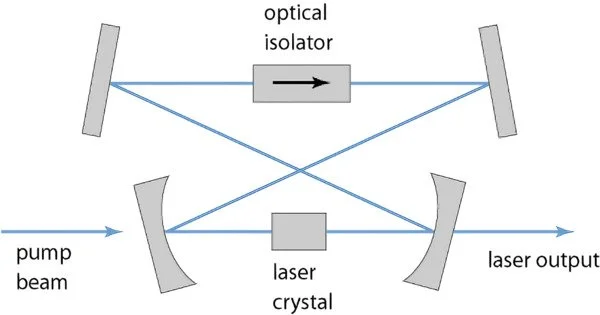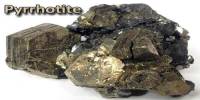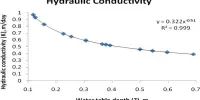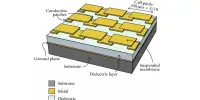Ring lasers are made up of two beams of light with the same polarization going in opposite directions in a closed loop (“counter-rotating”). These are lasers that generate coherent light by using a ring-shaped optical resonator cavity. They have a variety of uses, including navigation, precise measurement, and fundamental physics research. Ring lasers differ from more conventional Fabry-Perot lasers in that they use a linear resonator cavity.
Ring lasers are most commonly utilized as gyroscopes (ring laser gyroscopes) in moving vehicles such as cars, ships, planes, and missiles. The largest ring lasers in the world can detect minute details of the Earth’s rotation. Large rings can also push scientific research in new directions, such as detecting gravitational waves, Fresnel drag, the Lense-Thirring phenomenon, and quantum-electrodynamic phenomena.
In a rotating ring laser gyroscope, the two counter-propagating waves are slightly altered in frequency, resulting in an interference pattern that is used to calculate rotational speed. The rotation response is a frequency differential between the two beams that is proportional to the ring laser’s rotation rate (Sagnac effect). The distinction is plainly discernible. Generally, however, any non-reciprocity in the propagation between the two beams leads to a beat frequency.
Here are some key characteristics and applications of ring lasers:
- Ring Resonator Cavity: These have an optical cavity that is closed-loop or ring-shaped. Light travels throughout this space, reflecting off mirrors or other reflective surfaces to form coherent light. Typically, the ring design delivers stable and precise laser emission.
- Directional Bistability: These can be directional bistable, which means they can emit light in two different directions at the same time. This characteristic makes them suitable in applications requiring angular rotation measurement or detection of minor changes in rotation.
- Rotation Sensing: Ring lasers, particularly ring laser gyroscopes, are widely utilized in inertial navigation systems. These devices detect the frequency difference between the counter-rotating laser beams in the ring cavity to determine angular rotation. This technology is employed in the navigation systems of aircraft and spacecraft.
- Gravity Wave Detection: Some large-scale ring lasers, known as kilometer-scale ring lasers, are used for fundamental physics research. They are sensitive enough to detect minuscule changes in the Earth’s rotation, which can be caused by phenomena like seismic activity, gravitational waves, or even shifts in atmospheric pressure.
- Frequency Stabilization: Some laser frequency stabilization solutions use ring lasers. They may achieve highly steady and exact laser output by locking the laser’s frequency to the resonance of the ring cavity, which is critical in applications such as spectroscopy and precision measurement.
Ring lasers are essential instruments in a variety of applications due to their stability, precision, and ability to detect minute angle changes. However, they can be difficult to construct and operate, and they are frequently more expensive than other types of lasers.
















